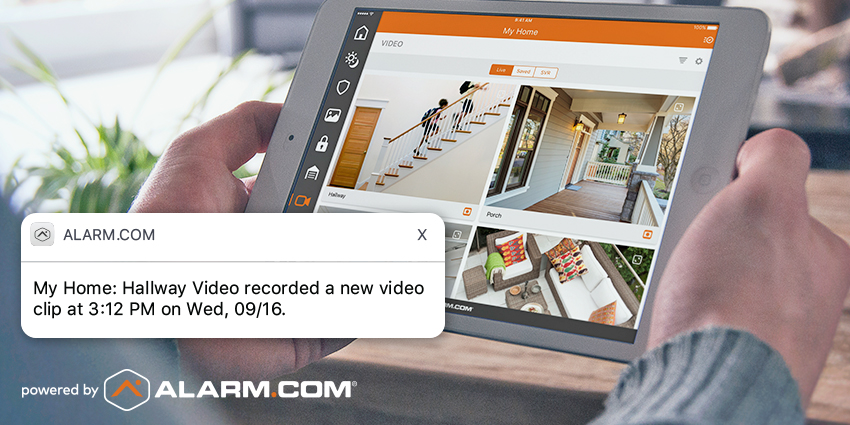If you’ve followed our blog at all, you know that we encourage utilizing a healthy variety of security equipment. Doing so helps you prepare for — and react to — the widest range of safety and security dangers possible. However, not all of the devices used to create this security are created equal. Sometimes, even equipment installed with the best of intentions can work against you when you need it most. In this post, we want to help you recognize why this happens. Today, we aim to help you with your efforts in avoiding security measures that backfire.
First, we’ll create a quick overview of why this may happen. The factors listed in this section can affect your decision-making regarding any of the specific types of security we will discuss later on. From there, we’ll look at a few very specific areas in which security can fail when executed improperly. Specifically, we’ll get started with a look at the dangers of installing the wrong lock hardware. Then, we’ll shift our focus to the importance of choosing the best alarm monitoring possible. Finally, we’ll review the downfalls of failing to properly integrate your different types of security. Now, let’s dive in and see why security measures backfire in the first place!
Why Do Security Measures Backfire?

Understanding the reasons security efforts can backfire goes a long way towards choosing the right path when executing your own security efforts.
As we mentioned above, sometimes the best security plans get laid to waste. This happens for a couple reasons. For starters, sometimes it has to do with prioritizing budget-friendly measures over effective means of security. This especially relates to the next couple sections of this post, as you’ll soon see. As with most things in life, with security products you often get what you pay for. While we aim to make security cost-efficient any way we can, cutting corners only hurts your security.
Additionally, some of the mistakes detailed here happen as a result of proper education. Many DIY security prjects fall under this category. While we fully support the notion of using elbow grease and personal knowledge to get things done, sometimes it leads to ineffective security that falls far short of security industry standards. Consulting a security integrator such as ourselves can greatly increase your security products’ effectiveness. Additionally, it can also ensure a legal installation of your security products that will pass an inspection from the local building department. Finally, as we’ll see a little later on, it also helps create connected security. This can streamline your security experience and even save money in the long run by having just one service provider for all of your security equipment. Let’s now examine the importance of installing well-selected locks.
Choosing the Wrong Locking Hardware
When it comes to selecting locks for your home, you have a couple things to look out for. First and foremost, we’ve already pointed out that budget security measures can greatly hurt your security. This rings more true than ever in the lock business. While you can get locks for $10-15 at your local hardware store, we recommend you stay away from this hardware. Instead, consider paying more to invest in the security of your home or business. Doing so can actually help you save money in the long run. After all, higher-quality locks can last a long time without losing their security.
In addition to the quality of lock you install, you must also pay attention to the type of lock you install. For example, choosing a single-sided deadbolt for a door with a large window can create issues. These deadbolts do not require a key to operate from inside your home. While convenient, this also allows burglars to break your window to unlock your door. This creates an easy way to bypass your lock and gain entry to your home.

Locks with removable thumbturns, such as this model by Medeco, allow you to detach your thumbturn while you are away to prevent burglars easy entry into your home.
For doors that you do not rely on for a fire escape, consider installing a double-sided deadbolt. These deadbolts require a key to operate from either side. Therefore, breaking the glass will not allow criminals to operate your deadbolt. If you do anticipate using a door with a window in case of a fire, consider a deadbolt with a removable thumbturn, such as the pictured model by our preferred lock manufacturer, Medeco. This gives you the right amount of door security without sacrificing your fire security! Next up, we’ll see how choosing the wrong type of alarm monitoring can backfire on you.
Using Inconsistent Alarm Monitoring Methods
The majority of our security system customers take advantage of our alarm monitoring services. Setting up this service involves connecting your security system to our central monitoring station. In turn, this connection creates communication between your alarm and our central station upon activation. Therefore, a burglary or fire-related emergency can lead to a central station response. At that point, our central station can create an emergency police or fire department dispatch if necessary.
Older alarm systems generally utilize a customer’s existing phone lines to create this communication. Unfortunately, this often proves ineffective and can quickly backfire for a couple reasons. To begin with, traditional phone lines do not provide reliable, consistent service. Phone service can fail due to weather-related incidents or even car accidents involving telephone poles. Furthermore, burglars often cut a property’s phone lines before attempting a break-in. They do this to disable any attempts to call for help that you or your alarm system may make after a break-in.
Recently, new technology has created the ability for better alarm monitoring. In particular, our interactive cellular monitoring service, powered by Alarm.com, provides the best security monitoring available. This service utilizes a cellular network, rather than phone lines, for monitoring. This leads to consistent central station communication. Moreover, this service also allows you to control your security system, as well as a wide variety of smart home devices, with a smartphone! Our post sharing 5 Benefits of Cellular Alarm Monitoring covers some of the features of interactive cellular monitoring in detail. Next up, let’s see how failing to create integrated security can lead to security measures that backfire.
Failing to Integrate Security Equipment
As your neighborhood’s one-stop security shop, we like to plan ahead when it comes to installing multiple layers of security. Unfortunately, many alarm companies do not provide a full umbrella of security services. This can lead to increased costs in the form of using many providers to install multiple types of security that could have all been connected. In particular, our Alarm.com cellular dialer mentioned earlier allows us to integrate burglar alarm, surveillance, and smart home security devices that all work together.

Adding Alarm.com smart cameras can help secure your home by giving you access to both live and recorded video clips.
In addition to allowing you to control your security system remotely, our cellular dialer also acts as a Z-wave smart home hub. The term “Z-Wave” refers to a mesh network providing communication between the hub and smart home devices that operate on this network. As one of the most popular smart home platforms, having a Z-Wave hub in place gives you many options to add smart security devices! Of particular importance, our Alarm.com smart cameras allow users to view both live and recorded video on a computer or smartphone. Additionally, keypad smart locks add security by allowing you to lock and unlock your doors remotely, or provide users a code, rather than a key, to unlock your doors. Furthermore, our customers often install Z-Wave light bulbs to allow them to create light schedules and make their homes look occupied at all times.
Finally, we also recommend tying your smoke, heat, and carbon monoxide (or “CO”) detection into your security system. Doing so creates a fire department response to a fire or CO-related emergency in your home. This can save your home or, in extreme cases, even a life! Getting all of your security products connected can add tremendous security while greatly simplifying your life as well.
Putting it all Together and Avoiding Security Measures that Backfire
We hope that this post helps you understand more about security measures that backfire, and how to avoid them. Additionally, we also encourage you to contact us with any questions the material in this post may raise for you. We will happily answer any and all of your security-related inquiries. Moreover, we also invite you to take advantage of our free site survey program. We offer both new and existing customers free security audits and equipment quotes. We’ve already touched on the importance of including a full-time security outfit in your efforts to design and install security measures on your property. So here’s your chance to make it happen! Together, we can design an effective and efficient system of products that keep you and your family as safe and secure as possible.
